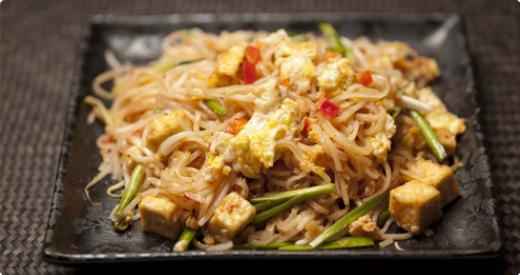
It’s easy to pick up a quick and delicious meal in Thailand, that can cost next to nothing and only takes a few minutes to scoff down in the blazing heat at a laminated table on the side of the road. It’s also easy to forget how intricate and labour-intense traditional Thai food is. Food is an enormous part of Thai culture, however more and more restaurants in Thailand these days take shortcuts in cooking to save time and effort, adding to the risk of traditional recipes practised for centuries disappearing. Bo.lan is a restaurant in bustling Bangkok that is ultra-traditional in its methods, while still managing to remain innovative and ahead of its time. Duangporn Songvisava (bo), earned her skills under Thai cooking legend, David Thompson. Songvisava follows much of Thompson’s teachings and philosophies towards cooking, and these are reflected at Bo.lan. Her and her partner Dylan endorse the slow food movement, buy seasonal produce and hold the belief that good Thai restaurants should be found in Thailand.
AP: Asian Palate DS: Duangporn Songvisava
AP: You’ve got an interesting mixture of business and hospitality training with a Bachelor in Restaurant Management and a Master degree in Gastronomy – how has this influenced your restaurant?
DS: The bachelor degree gives me the business aspect of operating the restaurant. It provides me with the framework of business principles like marketing, financial control, HR management which refrain me from being solely a chef who does not care about food cost and other things. MA charms me into the influential factors (ie. history, economy, social sciences and humanities) that rationalise Thai cuisine and its principles. The interdisciplinary properties allow me to stay grounded while I am cooking Thai food. It is very easy to go rambunctious while cooking such emotional and personal cuisine.
AP: You and your partner Dylan adopt the “revival and reinvention” traditional approach when it comes to cooking for an international audience. Do you prefer to stick to reviving traditional recipes as opposed to fusing with other cuisines for a more contemporary style?
DS: Food changes over time. In the old day food changed slowly and mostly due to the natural cost. Hence, there was more time for food to improve and develop with local wisdom and adapt into the society’s preferences. Fusion most of time, is too fast, too misunderstood and too far from the core and the roots of cuisines. I believe that the revival and reinvention approach is more appropriate for Thai cuisine in a way. There is a big gap between the generations in Thailand, which leads to the disappearance of some dishes in this modern day society.
AP: You have once said, “The thing with Asian cooking is recipes are only guidelines, you have to go by your taste”. How would you advise a beginner cook to do this?
DS: Practice. Learn to create taste memory; smell and remember the dimension of the flavours, the look, the texture. Trust your feeling, trust your senses. And the end of the day, Asian cooking,especially Thai, is based on individual preferences.
AP:With the variety of flavours and texture featured in Thai cuisine, what are your tips on how to match wines with a Thai meal?
DS: Avoid high acidity wine, or very buttery, very dry and very tannic wine .Go with an off-dry or slightly sweet style, bubbles, or a medium bodied wine with a floral nose and long finish.
AP: Can you share with us an old Thai recipe(possibly with some modern adaptations by you)?
|
DS: Bon gai Nung (Relish of grilled aubergines and chilli’s with chicken wrapped in banana leaf and steamed)
|
AP: What are your plans for the future? Do you have any ongoing or new projects to update our readers?
DS: Our plans include a Bo.lan organic garden at the restaurant, and a Bo.lan cookbook!









